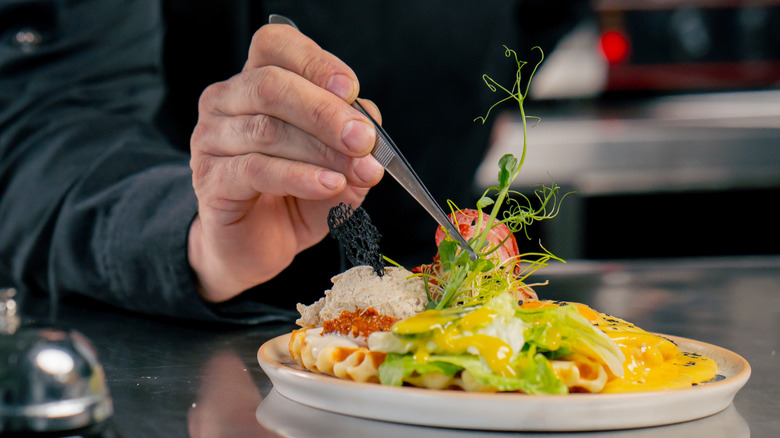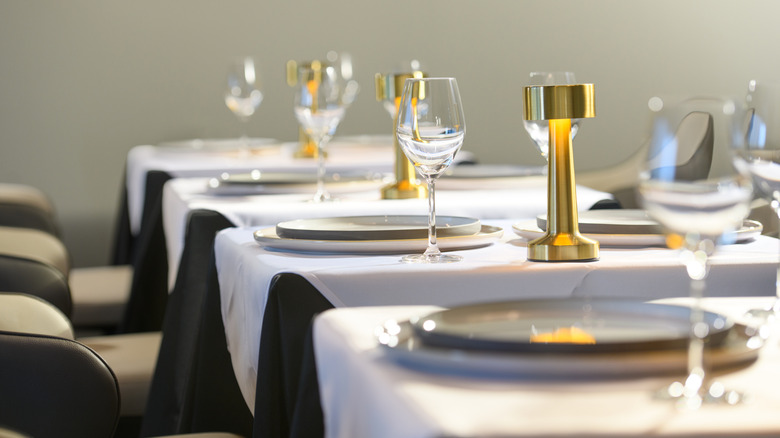What Makes A Restaurant Fine Dining
The term "fine dining" is often thrown around as a way to describe certain types of restaurants — but what does it mean, and what kinds of restaurants qualify as fine dining? Generally speaking, you can break up the restaurant world into three broad categories: fast food, casual dining, and fine dining. Fast food is the least formal of the three, fine dining is the most formal, and casual lies somewhere in-between (although there are extra categories like "fast casual"). Prices generally increase as a restaurant gets fancier and more formal, with fast food usually being the cheapest.
However, fine dining restaurants aren't defined just by price; it's a useful indicator, but you could still pay anything from $50 to thousands of dollars to dine at one. Instead, a key component of fine dining restaurants is high-quality food. Such restaurants pay close attention to where their food comes from, often working directly with carefully selected farmers or producers. Chef positions in fine dining kitchens usually require a lot of experience, as these highly-trained employees pay close attention to detail. Correspondingly, fine dining kitchens typically have more staff.Designated roles like executive chef and garde-manger play a key part. Additionally, specialty roles — like pastry chefs (which aren't necessarily worth the investment for casual restaurants) — are much more common. Even though certain cuisines (like French) are more represented in the fine dining world, fine dining can be any cuisine as long as it's high quality. Although fine dining restaurants often serve multi-course tasting menus, plenty will also offer à la carte options.
Other components of fine dining
Precisely executed, refined dishes are arguably the main hallmark of a fine dining restaurant. However, many argue that fine dining is also defined by things like service and ambiance. Just like chefs, fine dining servers need to pay a lot of attention to detail. This can mean very specific, detailed table settings, and even specific rules about which hands servers use to handle cutlery or glasses (there are unspoken rules for guests, too). That being said, some fine dining restaurants are loosening up and getting more casual — although service should still be high-quality, with servers ensuring items like cutlery and glasses don't have marks.
The ambiance in these settings is fairly subjective — fine dining restaurants may have soft lighting, classical music, and tablecloths, but these are hardly mandatory. Generally, though, fine dining restaurants will have fancier furniture and design compared to more casual establishments.
All of this said, there's no single factor that defines fine dining. Some experts argue that it's about a general vibe of sophistication in terms of things like service and atmosphere. A fine dining restaurant may or may not have tablecloths or servers in suits, but it almost certainly won't have sloppy joes on the menu, or burgers in greaseproof paper (unless it's an extraordinarily avant-garde establishment). In short, it's a package of these things, even if the exact details vary. Just make sure to do your own research and fact-check before you go, as some reviews can be misleading.

